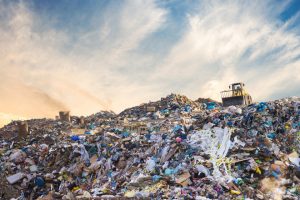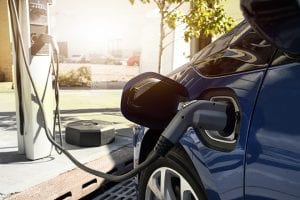Sustainable investing – the defining decades
A lot can happen in 30 years. Over the past three decades, we have seen explosive progress in science, technology and communications. In the same timeframe, the need for sustainable practices has become paramount. On the 30th anniversary since the origins of our Global Sustainable Equity team, we take a look at the developments that have shaped sustainable investing and the world we live in today.

5 minute read
Key takeaways:
- Resource use, waste production and environmental damage have been accelerated by population growth over the past three decades, worsened by consumer habits in the current linear economic model.
- Advances in technology – including the Internet, renewable power and batteries – have paved the way for efficient and sustainable practices which are renewable, electric and digital.
- We believe the next step in the planet’s sustainability journey is to decouple growth from the consumption of finite resources by operating through a circular economic model.
The 1987 paper Our Common Future, otherwise known as the Brundtland Report, provides the origins of sustainable investing. While ‘responsible investing’ traces its roots back much further, the concept of sustainable development was introduced by the report, commissioned by the United Nations. This defined ‘sustainability’ as “development that meets the needs for the present without compromising the ability for future generations to meet their own needs”. It was upon these principles that the Global Sustainable Equity team began investing four years later.
For the purposes of our look back, we group the drivers of development into three sections:
1. Science – transforming the outlook for life expectancy
As the standard of living improved across much of the world, so did global life expectancy. By 2011, people on average were expected to live to the age of 70 and today, the World Health Organization expects that this number has risen to 73.4 2011 was also the year that two thirds of the population had access to safe drinking water. Last year, that figure rose to three quarters.
2. Population growth – coming at a cost
Scientific advances contributed to the make-up of the global population, which has grown and urbanised rapidly. By 2011, the population reached seven billion – a billion increase on 12 years prior – and the human impact on the environment had become stark. Today, the global population stands at 7.8 billion, and the effects are ever more apparent. Resource use, waste production and environmental damage have been accelerated by population growth and worsened by consumer habits in a linear economic (take-make-dispose) model.
We believe the next step in the planet’s sustainability journey is to decouple growth from the consumption of finite resources by operating through a circular economic model.
 Meanwhile, atmospheric CO2, which contributes to the warming of the planet, has continued to climb. In May 2013, the Mauna Loa observatory in Hawaii recorded a daily mean CO2 concentration of 400 parts per million for the first time since measurement began in 1958.9 Today that number has risen to 412.97 parts per million. Global warming has caused the polar ice caps to melt at an alarming rate and arctic ice thickness has decreased by 40% since the late 1970’s.10 As a result, extreme weather events – wildfires, hurricanes and flooding – have become more prevalent across the globe.
Meanwhile, atmospheric CO2, which contributes to the warming of the planet, has continued to climb. In May 2013, the Mauna Loa observatory in Hawaii recorded a daily mean CO2 concentration of 400 parts per million for the first time since measurement began in 1958.9 Today that number has risen to 412.97 parts per million. Global warming has caused the polar ice caps to melt at an alarming rate and arctic ice thickness has decreased by 40% since the late 1970’s.10 As a result, extreme weather events – wildfires, hurricanes and flooding – have become more prevalent across the globe.
The pace and intensity of human’s impact on the planet are clear. As the global population has grown, so too has consumption of the Earth’s finite natural resources. It is important to note that the utilisation of resources is not equal among individuals with millions still living below the poverty line, yet the cumulative effect is meaningful, and devastating. This poses the key question that the world is currently grappling with – are we prepared to accept the potentially uncomfortable trade off and cost of moving from an unsustainable linear economic model to a circular economy based around renewable, electric and digital drivers?
3. Innovation – potential solutions
In 1989, the World Wide Web was created. Little did English scientist and inventor Tim Berners-Lee know at the time, but the Web, or Internet, would change the social landscape forever. Free global communication would soon become prolific and a key driver of social and commercial evolution. Since the late ’90s, individuals, businesses and governments have utilised the Internet to transform communication practices, and in some instances, remove communication barriers altogether.
Batteries are another important component of sustainability and is an area that has seen a huge inflection in innovation over the past decade. To achieve higher penetration of renewable energy, it must be possible to capture, store and use energy when needed. Advances in battery technology have therefore been key to the movement away from fossil fuel dependence.
 Recently, the 2015 Paris Climate Accord has set challenging targets to limit global warming. The world’s most industrial economies have responded by establishing policies to achieve the goals of the Paris Agreement. The UK, US and EU have targeted carbon neutrality by 2050, while China aims to achieve the same goal by 2060. The International Energy Agency’s 2021 Roadmap to Net Zero outlines the scale, pace and political commitment required to achieve a net zero energy system which includes the need to invest at least US$4 trillion annually into clean energy technology by 2030. Today, countries have committed a huge amount of capital to create the conditions for a globally synchronised investment boom into clean technologies.
Recently, the 2015 Paris Climate Accord has set challenging targets to limit global warming. The world’s most industrial economies have responded by establishing policies to achieve the goals of the Paris Agreement. The UK, US and EU have targeted carbon neutrality by 2050, while China aims to achieve the same goal by 2060. The International Energy Agency’s 2021 Roadmap to Net Zero outlines the scale, pace and political commitment required to achieve a net zero energy system which includes the need to invest at least US$4 trillion annually into clean energy technology by 2030. Today, countries have committed a huge amount of capital to create the conditions for a globally synchronised investment boom into clean technologies.
The path to a circular economy
As set out 34 years ago in the Brundtland Report, sustainable development is development which meets the needs of the present without compromising the ability for future generations to meet their own needs. Over the past three decades there has been huge progress in sustainability, yet significant challenges remain and, as things stand, we remain on a destructive path with an economic model that is still linear and fossil fuel driven.
Continue
On the positive side, science and technology have improved, and so has our understanding of what is needed to make the planet sustainable. We believe the next step in the planet’s sustainability journey is to decouple growth from the consumption of finite resources by operating through a circular economic model. In this model, the future will be shaped by renewable, electric and digital forces. But getting to this point will take concerted policy action at the highest level and a commitment in the face of difficult choices.
For 30 years, we have viewed the world through a lens of sustainability. We believe the world can make the necessary changes and that innovation holds the key to overcoming the obstacles ahead. By continuing to evolve and commit to the technologies already in place we believe it is possible, and essential, to switch to the circular economic model.
1World Health Organization, Global Vaccine Action Plan
2National Human Genome Research Institute, The Cost of Sequencing a Human Genome, December 2020
3J. Zarocostas, Serious birth defects kill at least three million children a year, February 2006
4Our World In Data, Life Expectancy, October 2019
5Our World in Data, Plastic Pollution, September 2018
6National Geographic Society, A Whopping 91 Percent of Plastic Isn’t Recycled, July 2019
7Marine Conservation Society, 2021
8World Wide Fund for Nature, September 2020
9National Oceanic and Atmospheric Administration, 2021
10Royal Society, Why is Arctic sea ice decreasing while Antarctic sea ice is not?, March 2020
11Worldbank, Expanding mobile broadband coverage is lifting millions out of poverty, December 2020
12Accenture, The green behind the cloud, September 2020
13International Energy Agency, Renewables Information, August 2021
14Carbon Brief, Analysis: How developing nations are driving record growth in solar power, November 2017
15Time, How Costa Rica Went 75 Days Using Only Clean Electricity, April 2015
16Bloomberg, Renewables Beat Fossil Fuels in EU for First Time Last Year, January 2021
17CNBC, The battery decade: How energy storage could revolutionize industries in the next 10 years, December 2019
18International Energy Agency, Global electric car sales set for further strong growth after 40% rise in 2020, April 2021
These are the views of the author at the time of publication and may differ from the views of other individuals/teams at Janus Henderson Investors. References made to individual securities do not constitute a recommendation to buy, sell or hold any security, investment strategy or market sector, and should not be assumed to be profitable. Janus Henderson Investors, its affiliated advisor, or its employees, may have a position in the securities mentioned.
Past performance does not predict future returns. The value of an investment and the income from it can fall as well as rise and you may not get back the amount originally invested.
The information in this article does not qualify as an investment recommendation.
Marketing Communication.
Important information
Please read the following important information regarding funds related to this article.
- Shares/Units can lose value rapidly, and typically involve higher risks than bonds or money market instruments. The value of your investment may fall as a result.
- Shares of small and mid-size companies can be more volatile than shares of larger companies, and at times it may be difficult to value or to sell shares at desired times and prices, increasing the risk of losses.
- The Fund follows a sustainable investment approach, which may cause it to be overweight and/or underweight in certain sectors and thus perform differently than funds that have a similar objective but which do not integrate sustainable investment criteria when selecting securities.
- The Fund may use derivatives with the aim of reducing risk or managing the portfolio more efficiently. However this introduces other risks, in particular, that a derivative counterparty may not meet its contractual obligations.
- If the Fund holds assets in currencies other than the base currency of the Fund, or you invest in a share/unit class of a different currency to the Fund (unless hedged, i.e. mitigated by taking an offsetting position in a related security), the value of your investment may be impacted by changes in exchange rates.
- When the Fund, or a share/unit class, seeks to mitigate exchange rate movements of a currency relative to the base currency (hedge), the hedging strategy itself may positively or negatively impact the value of the Fund due to differences in short-term interest rates between the currencies.
- Securities within the Fund could become hard to value or to sell at a desired time and price, especially in extreme market conditions when asset prices may be falling, increasing the risk of investment losses.
- The Fund could lose money if a counterparty with which the Fund trades becomes unwilling or unable to meet its obligations, or as a result of failure or delay in operational processes or the failure of a third party provider.
- The Fund follows a growth investment style that creates a bias towards certain types of companies. This may result in the Fund significantly underperforming or outperforming the wider market.
